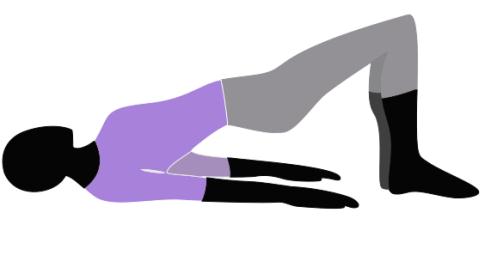
Adding yoga to regular exercise regimen reduces resting heart rate: Study
Adding yoga to a regular exercise training regimen reduced systolic blood pressure and resting heart rate and improved 10-year cardiovascular risk, researchers of a pilot study said.
The findings of the three-month pilot study, appearing in the Canadian Journal of Cardiology, recently demonstrated that yoga supports cardiovascular health and well-being and is more effective than stretching exercises.
“The aim of this pilot study was to determine whether the addition of yoga to a regular exercise training regimen reduces cardiovascular risk,” the lead investigator Dr Paul Poirier, of Quebec Heart and Lung Institute, Canada, said.
“While there is some evidence that yoga interventions and exercise have equal and/or superior cardiovascular outcomes, there is considerable variability in yoga types, components, frequency, session length, duration, and intensity,” he added.
“We sought to apply a rigorous scientific approach to identify cardiovascular risk factors for which yoga is beneficial for at-risk patients and ways it could be applied in a healthcare setting such as a primary prevention program,” Dr Poirier explained.
For the study, the investigators recruited 60 participants with previously diagnosed high blood pressure and metabolic syndrome for an exercise training program.
Over the 3-month intervention regimen, participants were divided into two groups, which performed 15 minutes of either structured yoga or stretching in addition to 30 minutes of aerobic exercise training five times a week.
The investigators measured blood pressure, anthropometry, high-sensitivity C-reactive protein (hs-CRP), glucose and lipids levels as well as the Framingham and Reynolds Risk Scores during the study period and bound that at the beginning there was no difference between groups in age, sex, smoking rates, body mass index (BMI), resting systolic and diastolic blood pressure, resting heart rate and pulse pressure.
After three months, they observed a decrease in resting systolic and diastolic blood pressure, mean arterial blood pressure and heart rate among participants in both groups.
However, they noted that among the yoga group, the systolic blood pressure fell by 10 mmHg with yoga compared to 4 mmHg in the stretching group.
Additionally, the participants in the yoga group also recorded a reduction in resting heart rate and 10-year cardiovascular risk, they added.
While yoga has been shown to benefit hypertensive patients, the exact mechanism underlying this positive effect is not fully understood. According to the investigators, this pilot randomised study shows that its benefits cannot be just attributed to stretching alone.
“This study provides evidence for an additional non-pharmacologic therapy option for cardiovascular risk reduction and blood pressure control in patients with high blood pressure, in the setting of a primary prevention exercise program,” noted Dr Poirier.
Pointing out that the study shows structured yoga practices can be a healthier addition to aerobic exercise than simply muscle stretching, Dr Poirier said, “As observed in several studies, we recommend that patients try to find exercise and stress relief for the management of hypertension and cardiovascular disease in whatever form they find most appealing.”
Pointing out that the study shows structured yoga practices can be a healthier addition to aerobic exercise than simply muscle stretching, Dr Poirier said, “As observed in several studies, we recommend that patients try to find exercise and stress relief for the management of hypertension and cardiovascular disease in whatever form they find most appealing.”